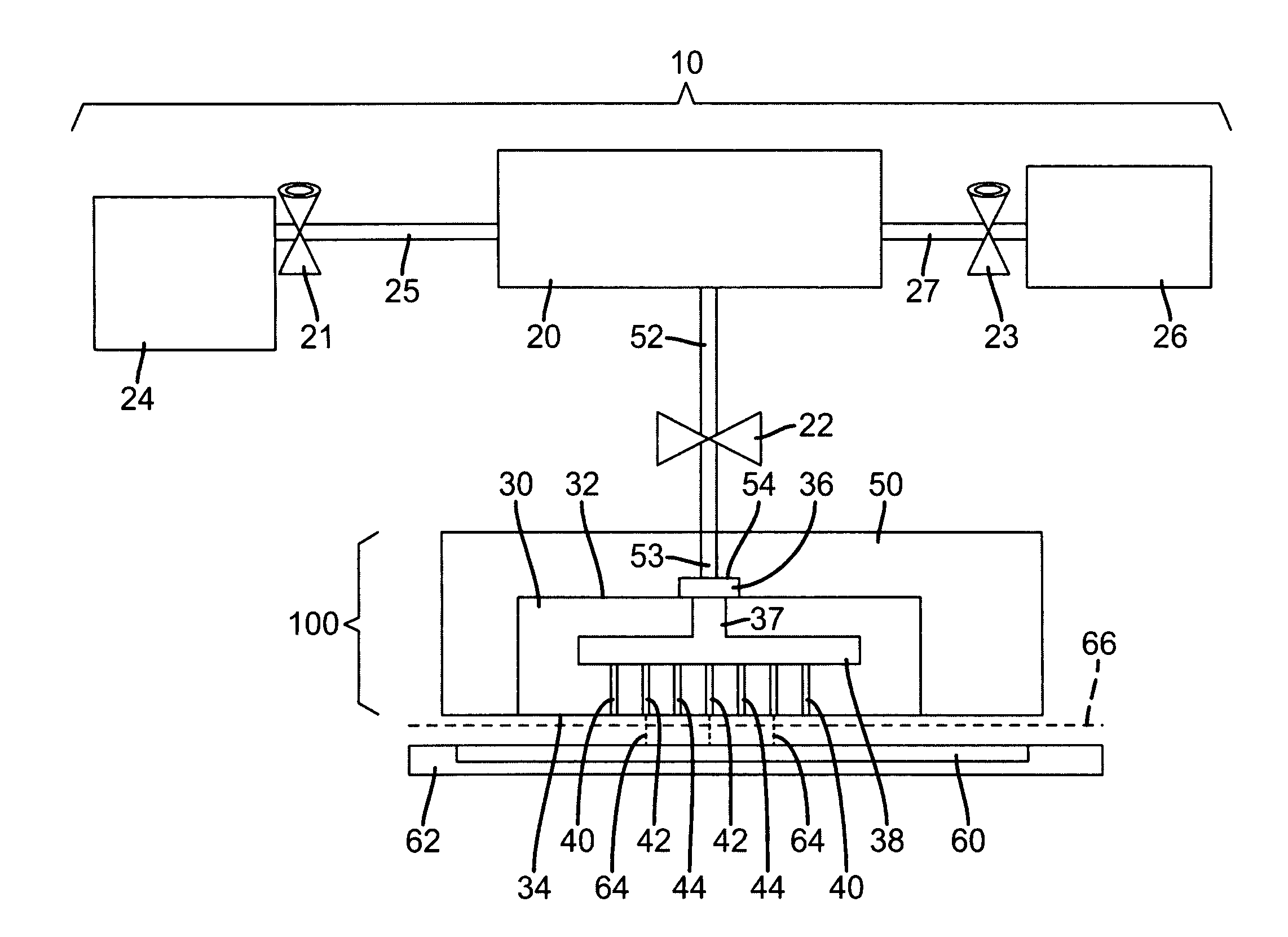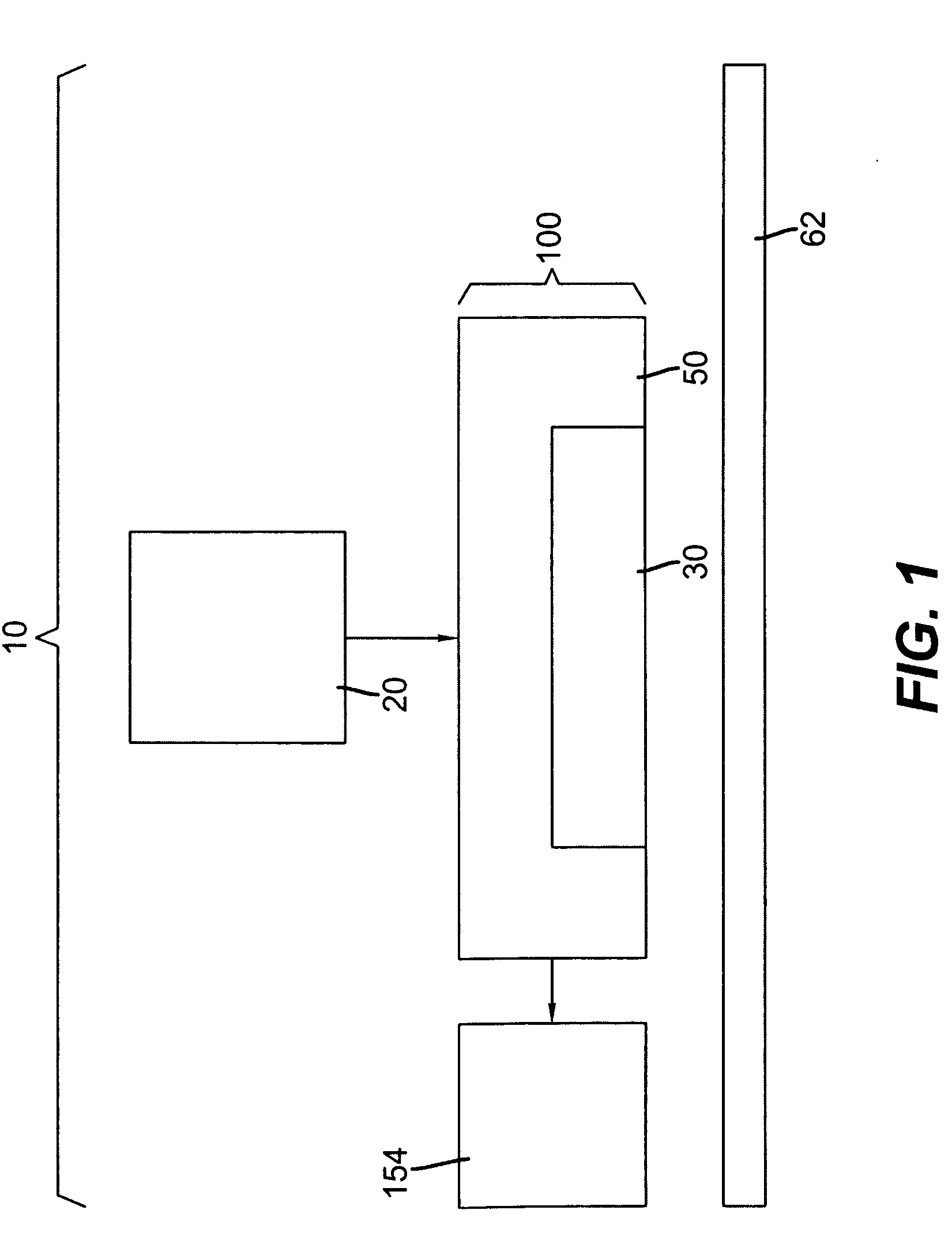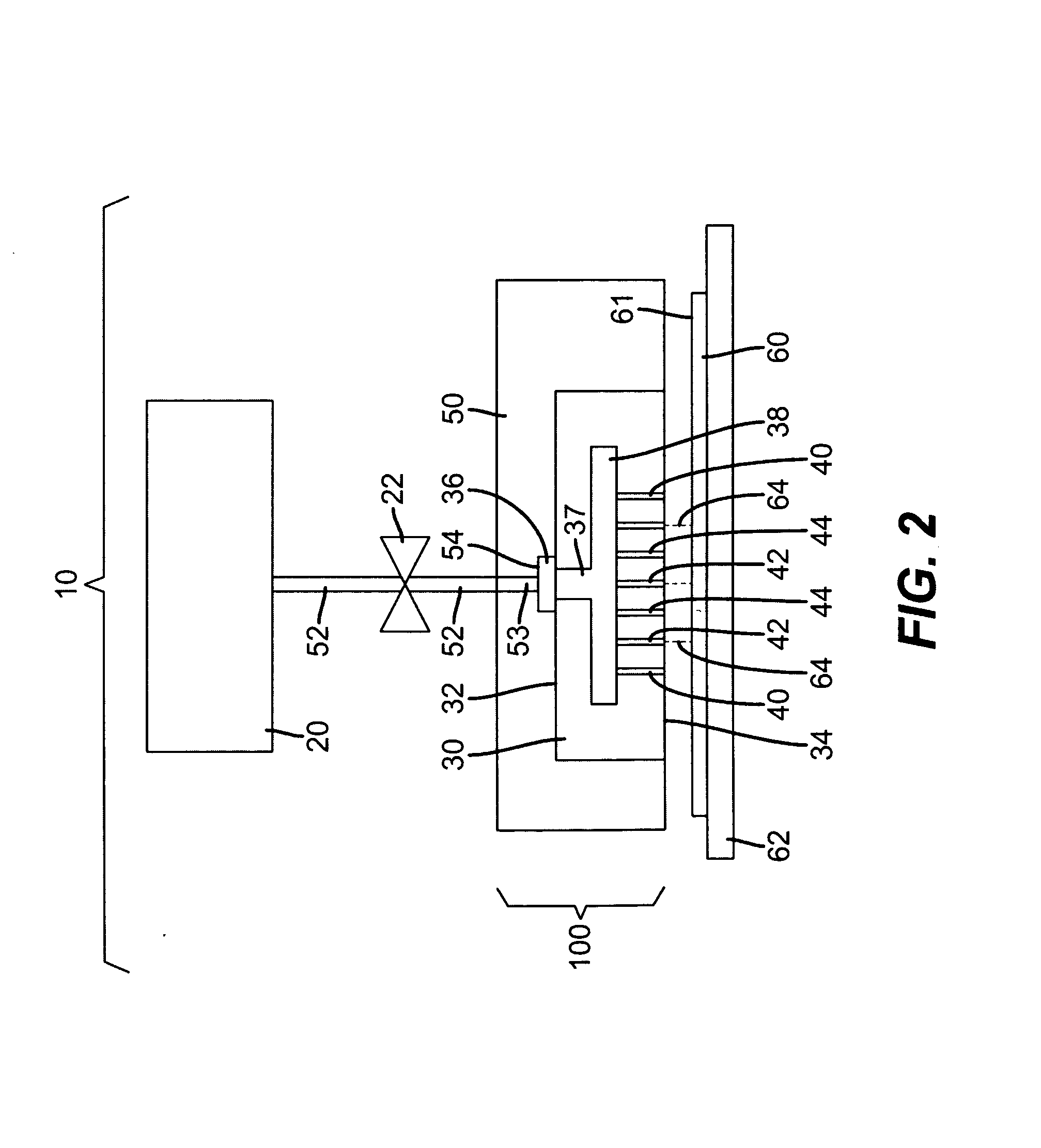MEMS printhead based compressed fluid printing system
- Summary
- Abstract
- Description
- Claims
- Application Information
AI Technical Summary
Benefits of technology
Problems solved by technology
Method used
Image
Examples
example 1
[0068]A 250 ml high-pressure vessel was used as the source of the marking material. The vessel had a floating piston, resistive heaters and a mechanical stirrer to allow operation at desired pressure and temperature. The vessel was connected to the housing with stainless steel tubing that was kept at constant temperature with a circulating water jacket. The silicon side of a 9.9 mm long, 2.5 mm wide, and 1.135 mm thick micro-machined glass-silicon manifold was interfaced with the housing by interposing an In (80%)-Pb (15%)-Ag (5%) gasket that had laser cut holes to mate with conduits in the housing. FIG. 17 shows an optical micrograph of a portion of the micro-machined manifold 30″ used in this example. The micro-machined manifold 30″ shown in the photograph of FIG. 17 is similar to the one shown in FIG. 9 with the exception that there is only one micro-nozzle 40 per fluid chamber 38. The photograph of FIG. 17 was taken with the glass or alternate second piece 43 facing up. All of t...
example 2
[0072]The housing 50 in Example 1 was attached to a different positional control unit that allowed the substrate to move along the x-axis and the housing was now movable—along the y-axis displacing orthogonally back and forth for each new line. Example 1 was then repeated with the following exceptions: (1) Compressed fluid mixture was kept at 125 bar; (2) the substrate 60 was spaced 0.76 mm away from the micro-nozzle outlets 44 at the second surface 43; and (3) the housing 50 and substrate 60 were moved laterally back and forth at a nominal speed of ca. 5.31 m / min. The average line width was ca. 184 μm. (See FIG. 19) which is equivalent to a divergence angle of 3.2 degrees.
example 3
[0073]Example 2 was repeated with the following exceptions: (1) Compressed fluid mixture was kept at 200 bar; and (2) the housing 50 and substrate 60 was moved laterally back and forth at a nominal speed of ca. 15.93 m / min. The average line width was ca. 104 μm which is equivalent to a divergence angle of 0.15 degrees.
PUM
 Login to View More
Login to View More Abstract
Description
Claims
Application Information
 Login to View More
Login to View More - R&D
- Intellectual Property
- Life Sciences
- Materials
- Tech Scout
- Unparalleled Data Quality
- Higher Quality Content
- 60% Fewer Hallucinations
Browse by: Latest US Patents, China's latest patents, Technical Efficacy Thesaurus, Application Domain, Technology Topic, Popular Technical Reports.
© 2025 PatSnap. All rights reserved.Legal|Privacy policy|Modern Slavery Act Transparency Statement|Sitemap|About US| Contact US: help@patsnap.com



